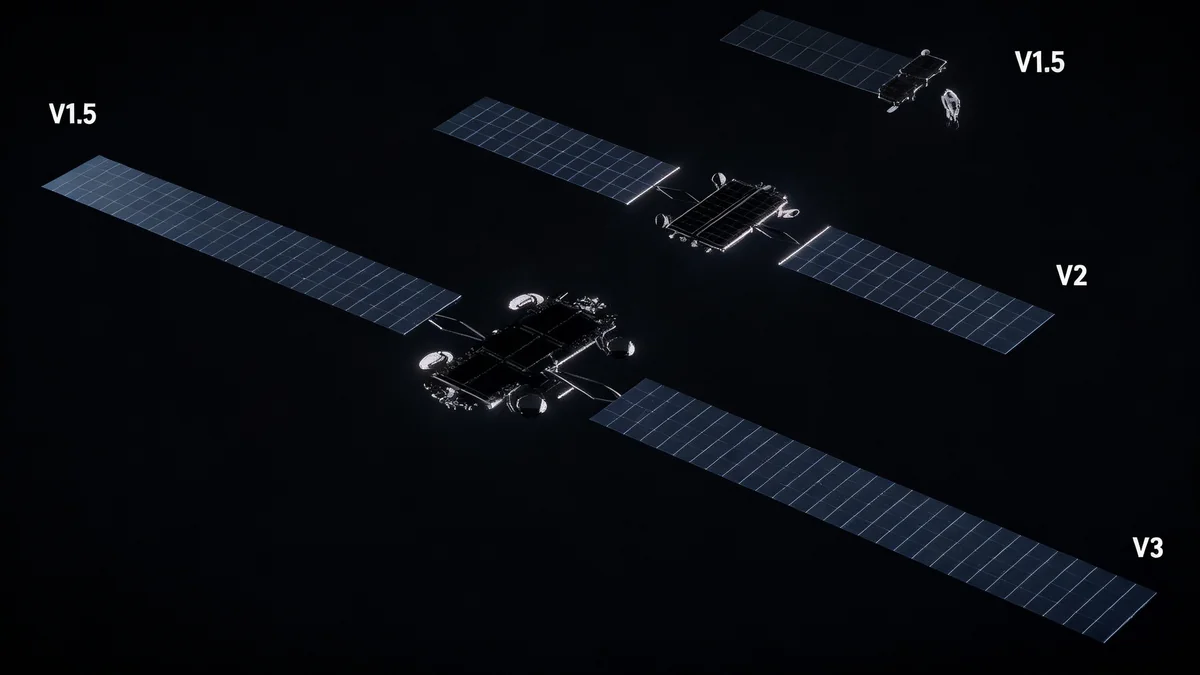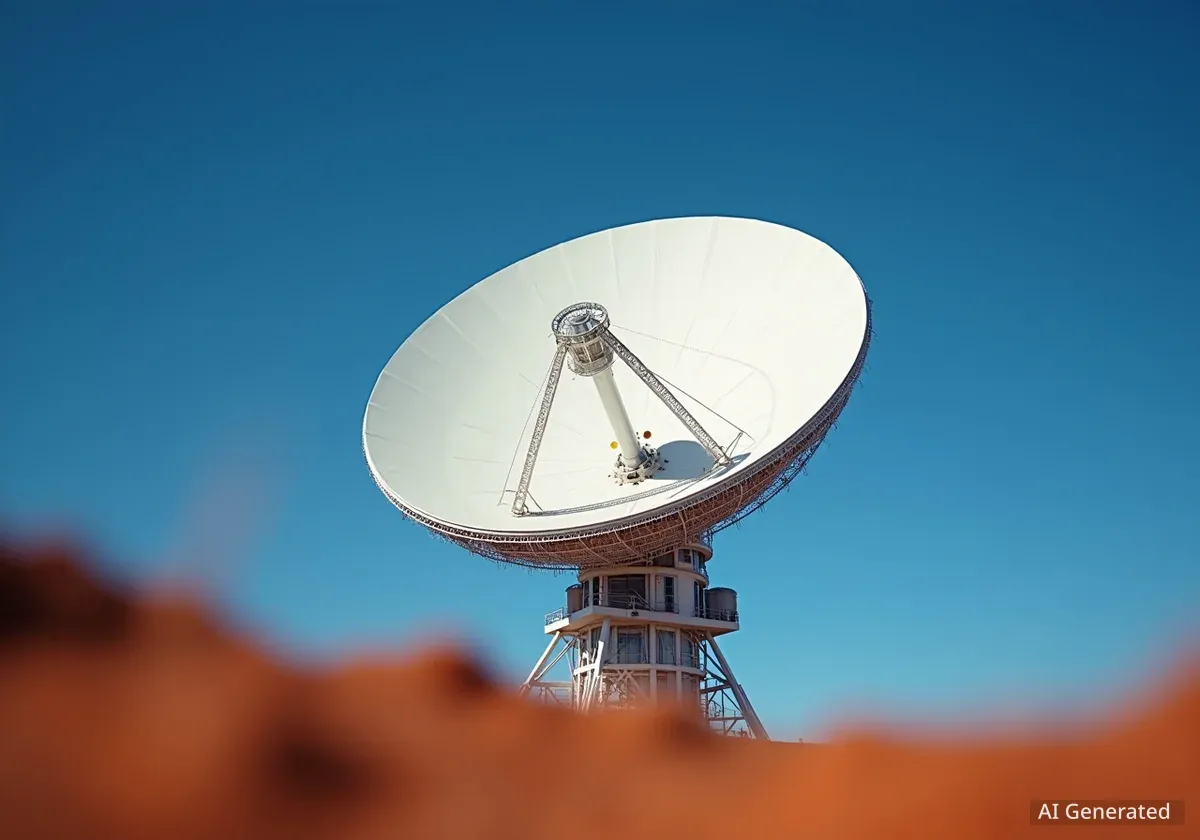The classic 1993 video game 'Doom' has been successfully run on a European Space Agency (ESA) satellite orbiting Earth. This achievement marks a new frontier for the long-standing challenge among programmers to make the game operate on unconventional devices, this time taking the experiment into outer space.
Icelandic software developer Ólafur Waage, in collaboration with ESA engineers, managed to port and execute the game on the flight computer of the OPS-SAT, a satellite designed as a 'flying laboratory' for orbital experiments. The project required innovative solutions to overcome the lack of a screen and graphics card, culminating in the satellite using its own camera to capture a screenshot of the gameplay with Earth in the background.
Key Takeaways
- The video game 'Doom' (1993) was successfully operated on the ESA's OPS-SAT satellite.
- The project was led by developer Ólafur Waage with support from an ESA team.
- Creative methods were used to display gameplay, including using the satellite's Earth-facing camera.
- The OPS-SAT is a specialized satellite intended for experimental software and computing tests in orbit.
- This marks one of the most complex and remote instances of running the iconic game.
A New High Score for an Old Challenge
For decades, a dedicated community of programmers and tech enthusiasts has taken on the challenge of making 'Doom' run on an ever-expanding list of devices. The game has appeared on everything from digital cameras and smart refrigerators to more unusual platforms like a MacBook Pro Touch Bar and even a medical ultrasound machine.
However, running the game on a satellite in orbit presents a unique set of obstacles. Unlike many earthbound projects that simply use a device's screen as a display for an external computer, this experiment involved running the game's code directly on the satellite's own hardware.
The satellite in question, OPS-SAT, is not a typical communications or imaging satellite. Launched by the ESA, it serves as an open-platform testbed for new space software and control systems. Its flight computer is significantly more powerful than those found on most conventional spacecraft, making it a suitable, if unconventional, candidate for such a task.
The Technical Hurdles of Gaming in Space
The primary challenge for Ólafur Waage and the ESA team was the satellite's lack of a traditional display. Without a monitor, confirming the game was actually running required a different approach. Initially, the team wrote a script that sent text-based updates to mission control, detailing the status of a 'Doom' demo running on the hardware.
These updates confirmed the game was processing actions like moving through levels, defeating enemies, and collecting items. While this proved the concept, the team wanted visual confirmation.
"A text output saying you ran Doom is nice, but it’s not nice enough," Waage stated during a presentation at the Ubuntu Summit. "What we wanted was a screenshot of the satellite playing Doom."
This goal was complicated by another hardware limitation: the OPS-SAT has no graphics card. It cannot render images in the way a personal computer does. The solution involved repurposing the satellite's onboard camera, which is normally pointed at Earth for imaging experiments.
Capturing Gameplay from Orbit
The team developed a sophisticated workaround to generate a visual. They configured the satellite's systems to capture the raw data from the game's memory—the information that would normally be sent to a screen—and translate it into an image file. This process required carefully mapping the game's limited 1993 color palette to the capabilities of the satellite's camera system.
Using specialized orbital software, they then instructed the camera to produce a screenshot of the gameplay at specific moments. The result was a verifiable image of 'Doom' being played hundreds of kilometers above the Earth's surface.
What is OPS-SAT?
The OPS-SAT is a small satellite, about the size of a shoebox, launched by the European Space Agency in 2019. Its purpose is to be a 'flying laboratory' where European companies and institutions can test new software and technologies in a real space environment without risking a multi-million-dollar mission. It features a powerful processor, cameras, and other instruments that can be controlled by experimenters on the ground.
In a particularly creative touch, the team went one step further. They wrote an additional script that replaced the pixelated sky within the game itself with a live, real-time image of Earth captured by the satellite's camera. This produced visually striking images showing the classic game interface overlaid with the actual curve of our planet seen from orbit.
More Than Just a Game
While running a video game on a satellite might seem frivolous, the project aligns perfectly with the mission of OPS-SAT. The satellite was designed to encourage experimentation and push the boundaries of what is considered possible with spacecraft operations, a field often characterized by extreme caution.
"The point was to break the curse of being too risk-averse with multi-million-dollar spacecraft," Waage explained, highlighting the satellite's role in fostering innovation.
Other Orbital 'Firsts' on OPS-SAT
Running 'Doom' is not the only unique experiment conducted on the versatile satellite. According to Waage, the OPS-SAT has also been used for:
- The first digital chess game played in orbit.
- The first stock market trade executed from space.
These experiments demonstrate the satellite's capability as a flexible platform for a wide range of software applications.
This achievement was a collaborative effort. Waage credited ESA engineer Georges Labrèche and the entire ESA team for their essential support in navigating the complexities of the satellite's systems. "It was as much a work of his as it was mine and the whole ESA team," Waage noted.
The successful 'Doom' port is more than just a novelty; it is a demonstration of the increasing power and flexibility of orbital computing platforms. It shows that with the right hardware and ingenuity, complex software can be run in space, opening the door for more advanced applications in the future. For now, it stands as one of the most ambitious and expensive efforts to answer the long-running question in programming culture: "But can it run Doom?" In this case, the answer is a resounding yes, even from low Earth orbit.





